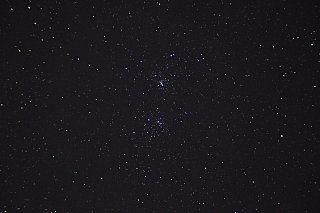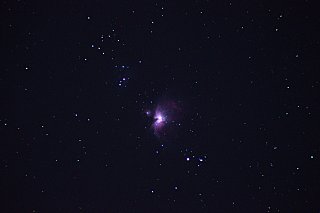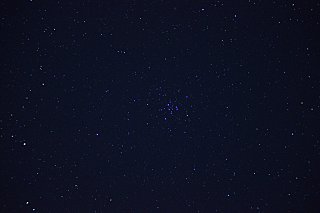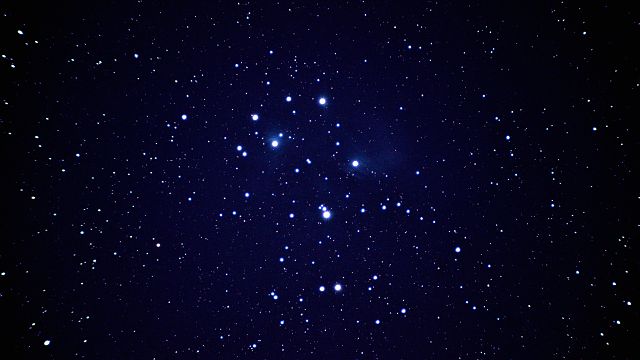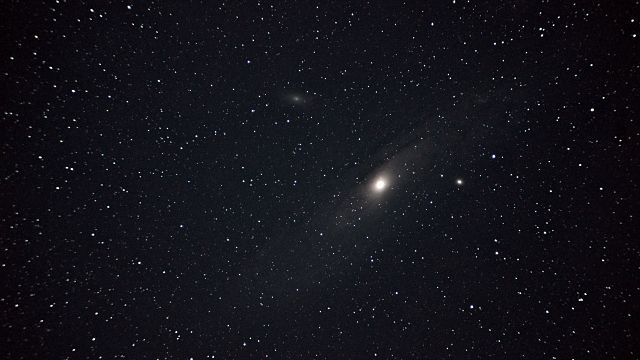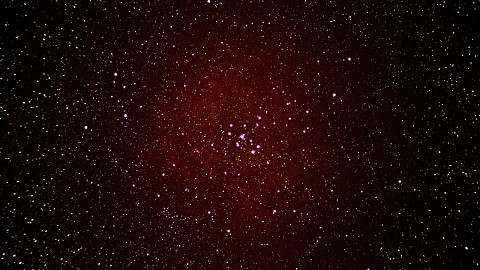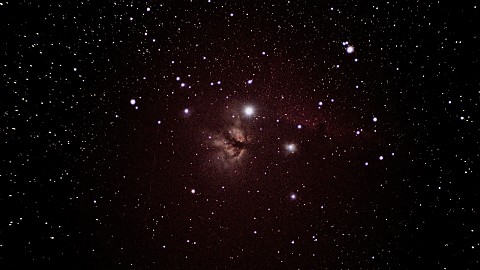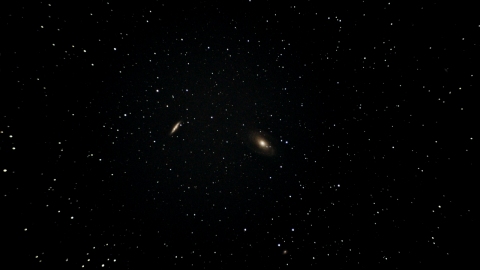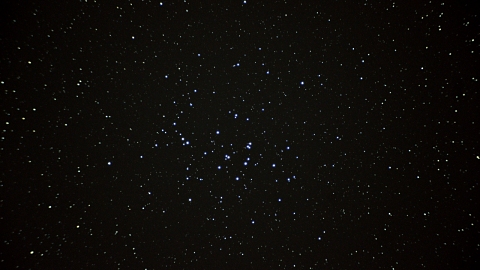A First-Light Review
Celestron® AstroMaster 80AZS
Celestron Item #: 21082
Purchase price: USD 180.00 + shipping/tax
Dealer: B&H Photo, New York, USA

The AstroMaster 80AZS is a short tube doublet achromatic refractor with an aperture of 80mm and a focal length of 400mm (F5) developed by Celestron and fabricated in China. According to Celestron the small telescope has 'Anti-Reflection Fully Coated Optics'.
Positive
- Most satisfactory optical performance for visual use.
- DSLR in focus range without additional extension tubes.
- Focuser threaded for a camera Ø42mm T-ring.
- Vixen-type dovetail has two 1/4-20 UNC threads for standard tripods.
- Light-weight 1.3kg Optical Tube Assembly.
- Bundled 20mm and 10mm Kellner eyepieces (FOV 40°) perform better than expected.
Negative
- DSLR images show comatic aberration at the sides (acceptable).
- Focuser and diagonal made of plastic (but is smooth and not wacky).
- Red dot finder itself is nice but the bracket resembles a DIY shop telescope.
- Focuser requires an extension tube for a webcam (minor issue).
- Dovetail too short for balancing with photographic gear.
Recommendation: offer the optical tube (OTA) only without tripod and use light aluminum for focuser and finder bracket. A focuser lock (even a thumb screw against the draw) would be nice to have.
Conclusion: primarily because of its good front lens, the ultra-portable refractor is a fine choice for both photography and visual observation of nebulae and star clusters. Photographers may wish to crop their images by up to 50%. This problem, (aberration), is physically inherent to low-cost short focal length achromatic refractors and not a product quality issue.
Optical Path of a Refractor

Source: Celestron LLC
CA-Index in a Nutshell
Two common criteria for small achromats of standard glass BK7+F2 offer a rough guide to the Chromatic Aberration Index, CA-Index.
"Conrady" requires that the focal ratio has to be at least 5 times larger than aperture in inches, while "Sidgwick" recommends at least 3 times.
For the AstroMaster 80AZS with its focal ratio of 5: CA-Index = 5 / 3.13 = 1.6, missing the target of both criteria, but this result is a 'filterable' level.
Totally unacceptable levels are <= 1.2. So, for an 80mm refractor, a focal ratio of minimum 10, meaning a focal length of 800mm, would be safe. Yet a 'faster' lens has
advantages such as portability and shorter exposure times when it comes to photography in the field. Anyway, it is a rule of thumb, while we are way better off than Galileo Galilei.
It is rather subjective, some people tolerate CA while others find it egregious.
Single Light Frames
The banner photo shows the telescope with a camera attached mounted on a manual tripod. Of course you won't shoot deepsky photos without a motorized equatorial mount.
All images are single unprocessed JPEG exposures right out of the camera. Equipment used: Celestron AstroMaster 80AZS, Nikon D5300 camera, Baader skyglow filter, Orion Atlas EQ-G mount for tracking. The original image size is 6000 x 4000 pixels, in-camera noise reduction OFF. They are reduced to 1280 x 853 pixels (enlargements on click) and saved again in JPEG for web use. Given the camera's APS-C sensor and the refractor's 400mm focal length the angular with of each image is 3.4°. Click on a thumbnail to enlarge.
Stacked & Processed Images
These four images each are stacks of 10 frames, 30 seconds exposure time, mix of ISO 800 / ISO 1600 / ISO 3200. Click on any to enlarge. Obviously, the author lacks image processing experience. It may be possible to squeeze more out of the frames. Anyway, et voilà:
Another four 30 seconds exposures at ISO 3200. The intention was to take at least 20 best frames for stacking but clouds had other things on mind. Actually 50 frames are required to achieve a 7-fold (√50) noise improvement over single exposures. Anyway, for reference:
Summary
The 'fast' F5 achromat suffices with about half the exposure time as compared with a, say, 1000mm refractor, a treat to ISO and rough polar alignment. Distortions (aberration) at the image periphery are inherent to the achromat's short focal length. From B&H Photo's spec list: "Refractor-style light path produces sharp and clear views with limited aberration". If this is acceptable, the AstroMaster 80AZS is a fine telephoto lens for deepsky photography, further, designed for portability and entry level on a budget.
Attaches to Vixen's "Polarie"

The solidly constructed Polarie is a portable tracking device that can take up to 3kg cargo (absolute maximum). The Celestron AstroMaster 80AZS OTA weighs about 1.3kg + eyepiece, well within Polarie's specification (the sunny side of plastic components). Thanks to the Polarie a so mounted and balanced light-weight telescope can be tracked for, say, group observations and star parties. Of course, this is not a sturdy setup. Be sure to remove the Porta II slow motion knobs and to set up a wind shield.

